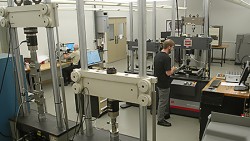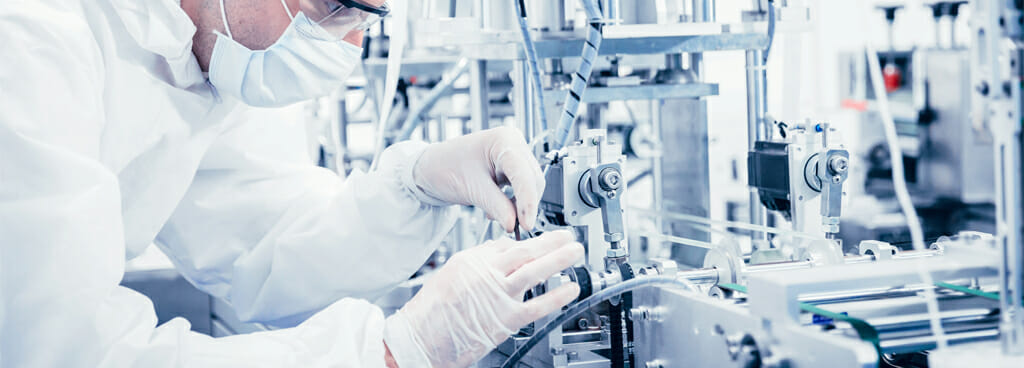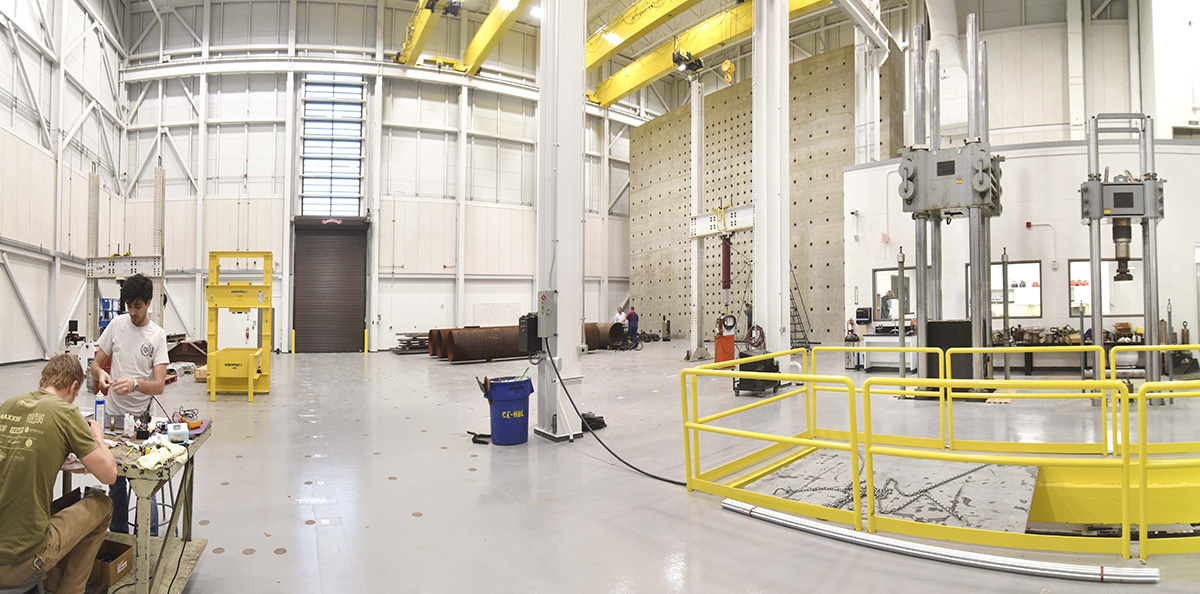Comprehensive Material Testing Lab: Your Companion for Specific Quality Assurance
Comprehensive Material Testing Lab: Your Companion for Specific Quality Assurance
Blog Article
Developments in Material Screening for Enhanced Quality Assurance
From non-destructive screening methods to automated systems, the area of material testing has seen impressive improvements. In this discussion, we will discover some of the latest trends in product screening, including the use of sophisticated sensor technologies, the integration of information analytics, and the role of man-made intelligence. Let's dive right into the globe of developments in product screening and discover just how these innovations are shaping the future of high quality assurance.
Non-Destructive Testing Techniques
Non-Destructive Testing Techniques play an essential role in making sure the stability and top quality of materials without compromising their structural stability. These techniques are utilized in different markets, including manufacturing, building and construction, and aerospace, to detect and recognize issues or abnormalities in materials or frameworks. By making use of non-destructive screening engineers, strategies and professionals can review the residential or commercial properties, qualities, and performance of products without triggering any damages.
One generally used non-destructive screening method is ultrasonic testing (UT) UT entails the use of high-frequency sound waves to spot flaws such as fractures, gaps, and additions in products.

Non-destructive testing methods offer beneficial information regarding the high quality and dependability of products, ensuring that they meet the called for criteria and specifications. By implementing these techniques, markets can boost their high quality assurance processes, decrease the threat of failing or accidents, and eventually supply more secure and extra trustworthy items to customers.

Automated Testing Systems
Automated screening systems have actually transformed the field of material testing, offering reliable and accurate techniques for assessing the high quality and stability of materials. These systems use innovative modern technologies and formulas to automate the testing process, decreasing human mistake and raising performance.
One secret advantage of automated testing systems is their capability to do tests at a much faster rate than hand-operated screening approaches. With making use of robotics and innovative software program, these systems can carry out multiple tests concurrently, substantially minimizing the time required for testing large sets of materials.
Furthermore, automated testing systems offer a greater level of precision and accuracy contrasted to hands-on screening. They can perform tests with regular criteria, ensuring that the outcomes obtained are reputable and reproducible. By eliminating human subjectivity and irregularity, these systems supply a more unbiased assessment of worldly quality.
Moreover, these systems are outfitted with sophisticated sensors and detectors that can discover also the tiniest defects or inconsistencies in material homes. This allows early discovery of possible issues, enabling suppliers to take restorative actions before the materials are used in critical applications.
In addition to their effectiveness and accuracy, automated screening systems likewise boost safety in product screening. By decreasing human involvement in possibly hazardous screening treatments, these systems reduce the danger of crashes and injuries, making certain a much safer working environment.
Advanced Sensing Unit Technologies
With the integration of advanced sensing unit modern technologies, product testing systems have actually accomplished also greater degrees of precision and effectiveness (material testing lab). Advanced sensing unit modern technologies play a vital function in enhancing the high quality assurance process by offering precise and real-time information throughout material testing. These sensors are qualified of spotting and determining different physical residential or commercial properties such as temperature, pressure, vibration, and pressure, enabling a comprehensive analysis of the material's behavior under various problems
Among the essential advancements in sensing unit technologies is the development of his response cordless sensors. These sensing units get rid of the need for cumbersome circuitry and enable smooth data transfer, boosting the total versatility and flexibility of the testing process. Wireless sensors can be quickly incorporated into existing material screening systems, making them a cost-effective service for updating and enhancing testing capacities.

Expert System in Material Testing
Expert system has actually reinvented the area of material screening, bringing extraordinary degrees of accuracy, effectiveness, and anticipating abilities to the top quality assurance process. With the capacity to examine large amounts of information and determine patterns that might go unnoticed by human operators, AI formulas have considerably boosted the reliability of material screening treatments.
Among the crucial benefits of using AI in material testing is its capability to anticipate product actions under different conditions. By training AI models on historic data, researchers can develop predictive versions that see this website can estimate the performance of materials in real-world situations. This enables producers to maximize product choice and design, lowering the requirement for lengthy and pricey experimental procedures.
Additionally, AI can automate and improve the product testing process, boosting efficiency and reducing human error (material testing lab). AI-powered systems can autonomously bring out testing procedures, accumulate and analyze data, and generate detailed reports. This not only conserves time yet likewise guarantees reliable and regular outcomes
Furthermore, AI can spot and evaluate material defects or anomalies with high accuracy. By comparing test results to predefined standards, AI algorithms can promptly determine variances and alert operators to prospective problems. This early discovery of flaws helps avoid defective materials from getting in the production procedure, inevitably boosting product quality and consumer contentment.
Combination of Information Analytics
Information analytics plays a critical function in the assimilation of material testing procedures, allowing manufacturers to make and extract useful insights informed decisions. By utilizing advanced analytic methods, producers can assess big volumes this article of information accumulated during product testing to recognize patterns, trends, and abnormalities that may impact the top quality and performance of their products.
Assimilation of data analytics in product testing permits producers to monitor and assess numerous parameters and variables throughout the testing process. This includes variables such as temperature, stress, stress, and other ecological problems that can influence the behavior and features of materials. By assessing this data, suppliers can get a much deeper understanding of just how different variables influence the efficiency and interact of their products.
Furthermore, data analytics helps in determining potential flaws or weak points in products, enabling makers to take aggressive measures to deal with these problems before they lead to product failures or security risks. This positive strategy can dramatically boost the overall top quality assurance procedure and boost consumer fulfillment.
Along with recognizing problems, data analytics can also maximize product screening procedures by identifying locations of renovation and recommending adjustments in the testing procedures. By examining historical data, suppliers can recognize patterns and patterns that can aid them enhance their testing processes, minimize costs, and enhance performance.
Verdict
Finally, developments in product testing have actually resulted in improved quality control in various industries. Non-destructive screening approaches, automated screening systems, advanced sensor technologies, and the integration of information analytics have all played a substantial duty in boosting the precision and effectiveness of material screening procedures. Furthermore, the application of man-made intelligence in material screening has actually additionally added to the advancement of more reputable and specific testing techniques. These advancements have actually caused better products and raised consumer satisfaction.
From non-destructive screening strategies to automated systems, the field of material screening has actually seen amazing innovations. Wireless sensing units can be quickly incorporated into existing product screening systems, making them an affordable option for upgrading and improving testing abilities.
Assimilation of data analytics in material screening permits producers to keep an eye on and assess different specifications and variables during the testing procedure. Non-destructive testing techniques, automated screening systems, progressed sensor technologies, and the combination of information analytics have all played a significant role in enhancing the precision and efficiency of product testing procedures. Additionally, the application of synthetic intelligence in product screening has actually even more added to the growth of even more exact and trusted testing strategies.
Report this page